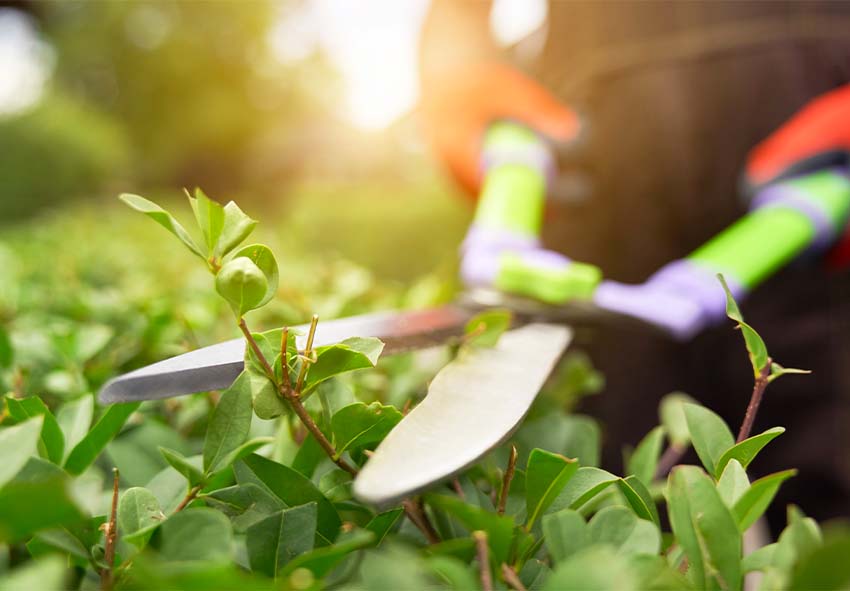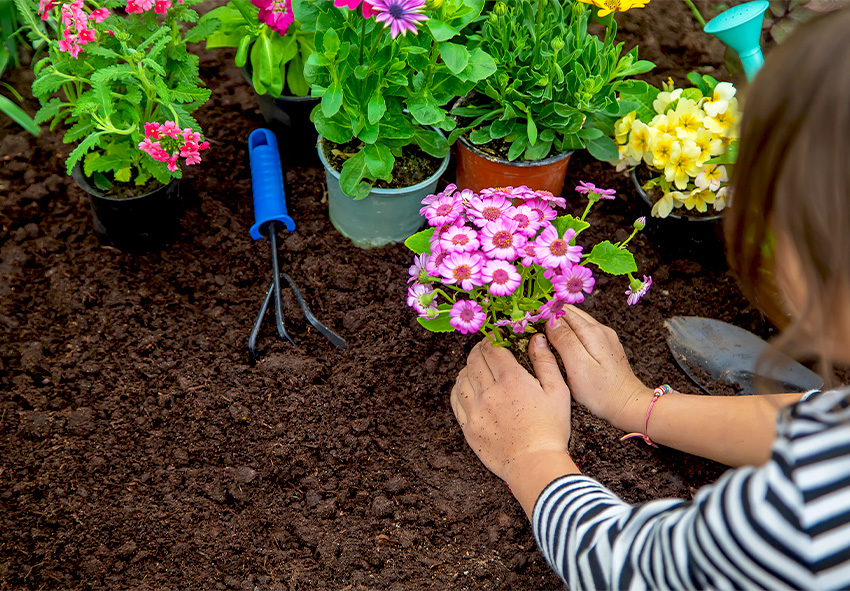Summer brings sunshine, longer days, and vibrant garden blooms — but also challenges such as intense heat, water loss, and pest outbreaks. Proper summer garden care is essential to keep your plants thriving during this demanding season. In this guide, we’ll explore everything from efficient watering tips to the best heat-resistant plants to help your garden flourish all summer long. Our gardening blog is a perfect place to find any information you need!
Watering Plants in Summer

Water is the lifeline of your garden, especially in the intense summer heat. Knowing when and how to water effectively can make a significant difference in plant health and water conservation. Let’s break down the best practices for watering your summer garden.
Best Time to Water Your Garden
The optimal time to water your garden in summer is early morning, ideally before 10 a.m. This allows moisture to soak into the soil and reach plant roots before the heat of the day causes rapid evaporation. Evening watering can also work, but avoid it if humidity is high, as damp leaves overnight may lead to fungal diseases.
Efficient Watering Techniques
Watering wisely in summer not only conserves water but also promotes stronger, deeper-rooted plants. These efficient watering techniques will help you keep your garden healthy and lush even in high heat:
- Water early in the morning: Reduces evaporation and allows plants to absorb moisture before the day’s heat peaks.
- Use drip irrigation or soaker hoses: Delivers water directly to the root zone, minimizing waste and reducing leaf diseases.
- Avoid overhead watering: Prevents moisture from lingering on leaves, which can lead to fungal issues.
- Water deeply but infrequently: Encourages roots to grow deeper, making plants more drought-resistant.
- Apply mulch to retain moisture: Mulch slows evaporation and keeps soil temperature stable, reducing the need for frequent watering.
Summer Gardening Tips
Beyond watering, other routine tasks can boost your garden’s resilience in summer. Mulching, weeding, and caring for the soil all help maintain ideal growing conditions even in scorching heat. These tips create a strong foundation for healthy and productive plants.
Mulching for Moisture Retention
Mulch is one of the best defenses against summer heat and water loss. Applying a 2–3 inch layer of organic mulch like shredded bark, straw, or compost helps insulate soil, retain moisture, and prevent weed growth. It also improves soil health over time as it breaks down.
Weeding and Soil Aeration
Weeding regularly in summer ensures your plants aren’t competing for valuable nutrients and water. Loosening compacted soil through gentle aeration improves root oxygenation and water penetration. These simple tasks support a more resilient garden during heatwaves.
Garden Maintenance in Summer

Maintaining your garden’s structure and appearance helps it function better during summer stress. Summer maintenance includes timely pruning and ensuring your lawn and pathways are in good condition. These efforts keep your garden both healthy and visually appealing.
Pruning and Deadheading
Pruning encourages healthy growth by removing dead or overgrown branches, improving air circulation. Deadheading spent blooms helps redirect energy to new flowers and extends the blooming season. Both practices enhance garden aesthetics and plant vitality.
Lawn and Pathway Care
During summer, keep your lawn slightly taller — around 3 inches — to shade roots and reduce water needs. Maintain clean, weed-free paths to prevent tripping hazards and ensure that irrigation systems are not obstructed. Consistent upkeep makes the garden more enjoyable and healthy.
Pest and Disease Control in Summer
Pests and diseases thrive in the warm, humid conditions of summer. Keeping your plants healthy means staying alert and taking action early. Learn how to identify threats and apply effective treatments for a pest-free garden.
Identifying Common Summer Pests
Summer heat attracts pests like aphids, spider mites, whiteflies, and caterpillars. Look for signs such as curling leaves, yellowing, or chewed foliage. Early detection is critical to prevent infestations from spreading.
Natural and Chemical Control Methods
Managing pests and diseases in your summer garden requires a balanced approach. By combining natural and chemical control methods, you can effectively protect your plants while maintaining a healthy garden environment:
- Introduce beneficial insects: Ladybugs, lacewings, and predatory mites help control aphids, whiteflies, and other pests naturally.
- Use neem oil or insecticidal soap: These organic treatments target soft-bodied insects and are safe for most beneficial organisms.
- Apply diatomaceous earth: A natural powder that dehydrates crawling insects like slugs and beetles when sprinkled on soil or foliage.
- Choose targeted chemical treatments: Use selective pesticides only when necessary, and follow all label directions carefully to avoid harming pollinators.
- Rotate treatments to prevent resistance: Alternate between control methods to reduce the risk of pests developing resistance to specific products.
What is more, summer garden cleanup can also help prevent disease, control pests, and keep plants thriving.
Choosing Heat-Tolerant Plants

Selecting the right plants is crucial for summer success. Heat-tolerant species can thrive under high temperatures and require less maintenance. Explore perennial and annual options that will flourish in the heat.
Top Perennials for Hot Weather
When temperatures rise, it’s important to choose perennials that can handle the heat without wilting. These resilient plants not only survive the summer sun but continue to add beauty and color to your garden:
- Black-eyed Susan (Rudbeckia hirta): Bright yellow blooms thrive in full sun and tolerate drought well.
- Coneflower (Echinacea): A pollinator favorite that flourishes in hot, dry conditions with minimal care.
- Russian Sage (Perovskia atriplicifolia): Silvery foliage and lavender blooms offer heat and drought resistance.
- Coreopsis (Tickseed): Low-maintenance and long-blooming with cheerful daisy-like flowers.
- Blanket Flower (Gaillardia): Thrives in poor soil and heat, producing vibrant red and orange blooms all season.
- Sedum (Stonecrop): Succulent-like foliage that withstands drought and intense sun with ease.
- Yarrow (Achillea millefolium): Hardy clusters of flat-topped flowers attract pollinators and tolerate dry heat.
- Daylilies (Hemerocallis): Known for reliability and repeat blooms, even in hot weather.
Annuals That Thrive in the Heat
Zinnias, marigolds, and cosmos are excellent annuals for hot climates. They bloom continuously with minimal care and bring bold color to borders and containers. Choose disease-resistant varieties and deadhead regularly for best performance.
Container Gardening in Summer
Containers are a flexible and stylish way to garden, but they come with their own summer challenges. With proper care, your potted plants can be just as vibrant as in-ground plantings. Let’s look at how to keep them cool and hydrated.
Keeping Potted Plants Cool
Container plants are more susceptible to heat stress. Move pots to locations with afternoon shade or use light-colored containers to reflect sunlight. Grouping containers can also provide mutual shade and reduce heat exposure.
Watering Needs for Containers
Potted plants dry out faster and require frequent watering — sometimes daily during extreme heat. Ensure pots have drainage holes, and consider using moisture-retaining potting mixes. Self-watering containers are also helpful for consistent moisture levels.
Conclusion
Taking care of your summer garden doesn’t have to be overwhelming. With smart watering, seasonal maintenance, and the right plant choices, you can enjoy a healthy, blooming garden all summer long. Explore our online store for mulch, irrigation tools, pest control products, and heat-tolerant plants to make the most of your summer gardening season.
Frequently Asked Questions (FAQs) about Summer Garden Care
1. How often should I water my garden during the summer?
During hot summer months, most gardens require deep watering 2–3 times per week. It’s best to water early in the morning to reduce evaporation and fungal risks. Focus on the base of the plants to ensure roots receive moisture.
2. What are the best mulch types for summer gardening?
Organic mulches like shredded bark, straw, and compost are ideal for summer as they retain moisture, suppress weeds, and regulate soil temperature. Apply a 2–3 inch layer around plants, keeping mulch a few inches away from stems to prevent rot.
3. How can I protect my plants from summer pests naturally?
Encourage beneficial insects like ladybugs and lacewings by planting nectar-rich flowers such as dill and yarrow. Use neem oil, insecticidal soaps, or diatomaceous earth for organic control. For larger pests, consider physical barriers like netting or row covers to keep them from damaging vulnerable plants.
4. Can I order heat-tolerant plants or summer bulbs from your online store?
Yes, our online store Dutch-bulbs.com offers a wide variety of heat-tolerant plants, bulbs, and summer-blooming perennials suited for sunny, dry conditions. Explore our summer collection to find garden favorites that will flourish throughout the warmest months and keep your garden thriving.
5. What flowers or plants are best for summer color in hot climates?
Heat-loving plants like zinnias, marigolds, lantana, salvia, and sunflowers provide vibrant summer color and thrive in full sun. Perennials like coneflowers, daylilies, and black-eyed Susans are also dependable in hot conditions.
Published: 13.06.2025
